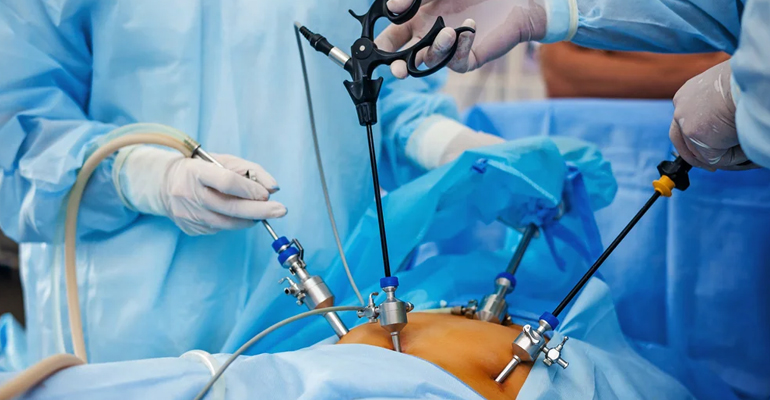Laparoscopic Surgery

Laparoscopic Surgery - Gallstones, Appendicitis, Hernias
Laparoscopic or “keyhole” surgery is a modern, minimally invasive surgical technique that uses small incisions and advanced instruments to diagnose and treat various abdominal conditions. Compared to traditional open surgery, laparoscopic surgery ensures faster recovery, smaller scars, reduced pain, and shorter hospital stays.
We specialize in laparoscopic management of gallstones, appendicitis, and hernias with a focus on safety, precision, and patient comfort.
Laparoscopic Gallstone Surgery (Cholecystectomy)
Gallstones are hardened deposits that form in the gallbladder and can cause severe abdominal pain, nausea, bloating, and indigestion. If left untreated, gallstones may lead to infection or inflammation of the gallbladder.
-
Procedure: In laparoscopic gallstone surgery, the gallbladder is removed through 3–4 tiny incisions using a laparoscope and fine instruments.
-
Benefits: Quick recovery, minimal pain, no large scar, and reduced risk of complications.
-
When Recommended: Repeated gallstone attacks, acute cholecystitis (infection of the gallbladder), or complications like pancreatitis.
Laparoscopic Appendicitis Surgery (Appendectomy)
Appendicitis occurs when the appendix becomes inflamed or infected, often causing sudden abdominal pain, fever, and vomiting. It is a surgical emergency and must be treated promptly.
-
Procedure: Laparoscopic appendectomy involves removing the inflamed appendix through tiny cuts in the abdomen using a camera-guided approach.
-
Benefits: Less postoperative pain, faster healing, shorter hospital stay, and lower risk of wound infection compared to open surgery.
-
When Recommended: Acute appendicitis, recurrent abdominal pain due to chronic appendicitis, or when diagnosis is uncertain.
Laparoscopic Hernia Repair
A hernia occurs when an internal organ or tissue pushes through a weak spot in the abdominal wall, appearing as a visible bulge. Hernias commonly occur in the groin (inguinal hernia), belly button (umbilical hernia), or near previous surgical scars (incisional hernia).
-
Procedure: In laparoscopic hernia repair, small incisions are made and a mesh is placed to strengthen the weak abdominal wall and prevent recurrence.
-
Benefits: Less pain, minimal scarring, early return to daily activities, and ability to repair bilateral or recurrent hernias simultaneously.
-
When Recommended: Symptomatic hernias causing pain or discomfort, large or recurrent hernias, or risk of complications such as obstruction or strangulation.
Why Choose Us for Laparoscopic Surgery?
-
Expertise in Minimally Invasive Surgery with years of experience.
-
Advanced Technology & Techniques ensuring safe and precise outcomes.
-
Personalized Care tailored to each patient’s needs.
-
Faster Recovery & Better Results allowing patients to return to normal life quickly.